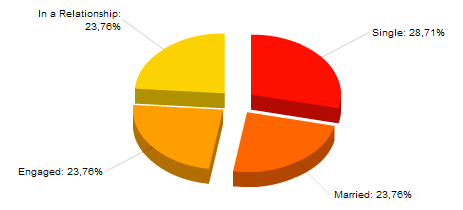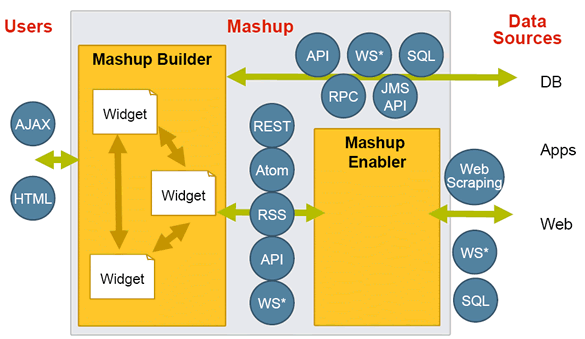Last week I was at Mashup Camp 6 in Mountain View, my 4th one so far. One of the discussions at the Camp was about how to market your mashups, and that got me thinking more about the subject. Here’s my rant about how to market your API or your mashup that resulted from my latte induced and lack-of-sleep fuled thinking. Since there are, by definition, several components to a mashups there are also several levels of marketing. The first one is where the API provider needs to market the API to developers to they start to use it. The second one is where the mashup developer needs to market their mashup to the end user.
The API Provider
You have this great service that lifts humanity to a new level, makes the sun shine brighter, makes TV sucks less and give the gift of limitless bandwidth to the people (or at least it is really cool). You have even added this great API, now what? How do you get developers to start using the API and spread the word of your great service to everyone and their grandmother?
Well, let’s back up a bit. First of all, do you really have a great service? If you do, then do you really have a great API? Without a product people want to use there is no need to go through the hassle of promoting it. Make sure that the API actually is usefull for developers, that it will enable them to do cool and usefull stuff easier than if they would just hack it all together from scratch. Also make sure that there are plenty of documentation, examples, code snippets etc for the developers to get their hands on to minimize the barrier to entry. Hack together some mashups yourself with your API included in the mix, to give people and idea of what can be done. The key to get an API used by developers is to get the developers excited about the possibilities and get them talking. So give them something to be excited about and something to talk about.
Once all that hard work is done then you can promote your API via directories such as programmableweb and webmashup so that developers can find you. If you have made your own example mashups, then go through the steps below to market that, that is a good way of getting some recognition.
Last, but not at all least, show some love for the developers that has taken their time and built something using your API. Have an example gallery where they can list their creations. Blog about them. Talk about them at conferences. “Link love shall be bestowed upon those who link love showeth”.
The Mashup Developer
For the developer of the mashup there is Google AdSense money on the line, or maybe just recognition from peers. Most mashups result in web pages anyway, so make sure to do all the SEO stuff – have good page titles, have a good copy, have validating HTML, have a sitemap available etc. If there is money down the line for you then also throw some money at advertising (Google & Facebook makes this a walk in the park). All this is standard, but as there are differences between mashups and a regular web page you should also use that to your advantage.
What APIs do you use? What tools have you used to piece things together? Explain how you made your mashup, what the moving parts are. If you used Yahoo! Pipes, then link to the pipes used and explain how they were done. If you used Google Maps (and if you are a mashup newbie then I guarantee that you have, just admit it… “my name is Andreas, and I am a Google Maps addict”) then explain how. If you used openkapow robots, then explain how you developed them. Since API providers are suckers for traffic, just as everyone else, it is not unlikely that they would be interested in adding your mashup (assuming it kicks-ass, which of course it does) to their example gallery. All this creates more link love, more Google baits and really increases the chances of your mashup being found and appreciated by fellow developers. Another plus is that all this also increases the chances to be blogged about, do not forget that bloggers are suckers both for traffic and content.
There’s both money and recognition in entering your mashup in a contest, see programmableweb for a good list of what you can enter right now. You might not have to redo the mashup from the ground up, just add another API to the already great mashup you have made and you could already be a winner. If you go to Mashup Camp you could enter the traditional Speed Geeking (like speed dating for mashups basically) and go home with a shiny new Macbook.
Of course also list your mashups in directories such as programmableweb and webmashup , but by now you should know that already 🙂
Thanks for everyone that discussed this with me at Mashup Camp! For the notes from this session check out the Mashup Camp wiki.




